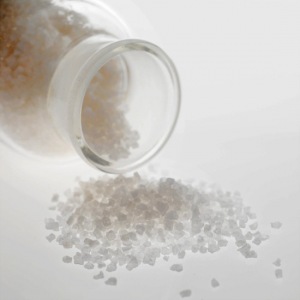People are inventing so many new, legal ways to get high that U.S.  lawmakers can’t seem to keep up.
lawmakers can’t seem to keep up.
Over the past two years, the country has seen a surge in the use of synthetic drugs made of legal chemicals that mimic the dangerous effects of cocaine, amphetamines and other illegal stimulants. Some are imported cheaply from China or India.
The drug that causes Zombie like reactions is often sold at small, independent stores in misleading packaging that suggests common household items like bath salts, incense and plant food. But the substances inside are powerful, mind-altering drugs that have been linked to bizarre and violent behaviour across the country. Law enforcement officials refer to the drugs collectively as “bath salts,” though they have nothing in common with the fragrant toiletries used to moisturize skin.
President Barack Obama signed a bill into law earlier this month that bans the sale, production and possession of more than two dozen of the most common bath salt drugs. But health professionals say that there are so many different varieties of the drugs that U.S. lawmakers are merely playing catch up.
“The moment you start to regulate one of them, they’ll come out with a variant that sometimes is even more potent,” said Dr. Nora Volkow, director of the National Institute on Drug Abuse.
There are no back alleys or crack houses in America’s latest drug epidemic. The problem involves potent substances that amateur chemists make, package and sell in stores under brands like “Ivory Wave,” ”Vanilla Sky” and “Bliss” for as little as $15.
Emergencies related to the drugs have surged. The American Association of Poison Control Centers received more than 6,100 calls about bath salt drugs in 2011, up from just 304 the year before, and more than 1,700 calls in the first half of 2012.
The problem for lawmakers is that it’s difficult to crack down on the drugs. U.S. laws prohibit the sale or possession of all substances that mimic illegal drugs, but only if federal prosecutors can show that they are intended for human use. People who make bath salts and similar drugs work around this by printing “not for human consumption” on virtually every packet.
Barbara Carreno, a spokeswoman for the Drug Enforcement Agency, said the intended use for bath salts is clear.
“Everyone knows these are drugs to get high, including the sellers,” she said.
Mark Ryan, director of the Louisiana Poison Center, says there are so many different drugs out there that it’s almost impossible to know what people have ingested, or how long the effects will last.
“Cocaine is cocaine and meth is meth. We know what these things do,” he said. “But with these new drugs, every time the chemist alters the chemical structure, all bets are off.”
The most common bath salt drugs, like MDPV and mephedrone, were first developed in pharmaceutical research laboratories, though they were never approved for medical use. During the last decade they became popular as party drugs at European raves and dance clubs. As law enforcement began cracking down on the problem there, the drugs spread across the Atlantic.
Poison control centres in the U.S. began tracking use of the drugs in 2010. The majority of the early reports of drug use were clustered in southern states like Louisiana, Tennessee and Kentucky. But the problem soon spread across the country.
The most dangerous synthetic drugs are stimulants that affect levels of both dopamine and serotonin, brain chemicals that affect mood and perception. Users, who typically smoke or snort the powder-based drugs, may experience a surge in energy, fever and delusions of invincibility.

